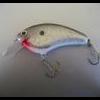
BobP replied to Bass&PanMan's topic in Fishing Rods, Reels, Line, and Knots

BobP replied to SNK's topic in Fishing Tackle
Tagged with:

BobP replied to Hannock's topic in Fishing Rods, Reels, Line, and Knots

BobP replied to Nstd's topic in Fishing Rods, Reels, Line, and Knots

BobP replied to Crankenstein Crony's topic in Fishing Rods, Reels, Line, and Knots

BobP replied to The Fisher's topic in Fishing Tackle

BobP replied to livemusic's topic in Fishing Rods, Reels, Line, and Knots

BobP replied to livemusic's topic in Fishing Rods, Reels, Line, and Knots

BobP replied to Phauren's topic in Fishing Tackle

BobP replied to Crank Bait Nut's topic in Tacklemaking

BobP replied to Penguino's topic in Fishing Rods, Reels, Line, and Knots
We have placed cookies on your device to help make this website better. You can adjust your cookie settings, otherwise we'll assume you're okay to continue.

